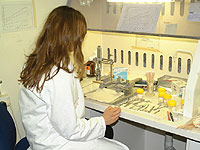|
|||||||||||||||||||||||||||||||||||||||||||||||
| Cellular Mobile Communications - TELE9344 | |||||||||||||||||||||||||||||||||||||||||||||||

Description Modern communication systems from a systems point of view. Cellular mobile communication systems. Radio Propagation-loss model. The mobile fading channel. Multiple access techniques TDMA, CDMA. Modulation and coding in mobile communication systems, Equalization and channel diversity, Wireless Standards - GSM and CDMA IS-95. The concept of Spread Spectrum (SS) Communications - historical background; Major Characteristics of SS-CDMA; Direct Sequence Spread Spectrum; Basic Features of DS-CDMA Systems, PN Sequences; CDMA System Processing Gain; Synchronization in CDMA; The BER Performance of DS-CDMA System; Interference Limited Capacity of a Single Cell CDMA System; Adaptive Mutiuser Detection on Multipath Fading Channel; Diversity and Smart Antennas ;Antenna Beam-Forming, and Space Division Multiple Access ; Overview of Fundamental Concepts Used in IS-95 CDMA; Channel Coding (Convolutional Codes); Maximum Likelihood Decoding (Viterbi Algorithm); Hadamard-Walsh Orthogonal Coding (orthogonal modulation); Concatenated Coding and Block Interleaving ; IS -95 CDMA Link Capacity; CDMA 2000; Evolution of IS-95 to CDMA 2000; Conceptual Similarities and Differences Between IS-95 and CDMA 2000
|
|||||||||||||||||||||||||||||||||||||||||||||||


